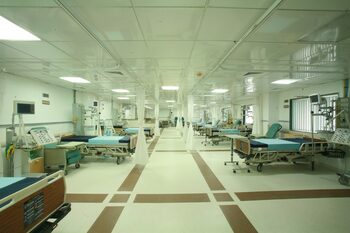- IT
- |
- EN

[Date of last update: february 2021]
Contamination of inanimate surfaces represents an important risk factor in the transmission of healthcare-associated infections and in the spread of antibiotic multiresistance.
The persistence of microorganisms over time (from a few hours to a few months) [1], especially on the surfaces around the health-care point and on high-touch surfaces, i.e. frequently touched by the patient and operator, is the most important source of indirect contact transmission.
Environmental contamination has been associated with the transmission of pathogens in major outbreaks of methicillin-resistant Staphylococcus aureus (MRSA), vancomycin-resistant enterococci (VRE), Clostridioides difficile (C. diff) and, more recently, in prolonged outbreaks of Acinetobacter baumannii.
Epidemiological investigations figured out that the patient's risk of colonization or infection increased significantly if the patient occupied a room that had previously been occupied by an infected or colonized patient [2].
Improving the quality of cleaning, sanitation and disinfection is necessary to reduce the infectious risk [3]. It is necessary to share a prevention risk-based strategy that classifies healthcare environments, specifies the most suitable methodology and tools, identifies methods and standards for cleaning assessment, based on objective tools (e.g. bioluminometer) compared to an almost exclusively "visual" evaluation of the quality of cleaning and sanitization.
[1]. Kramer A, Schwebke I, Kampf G. How long do nosocomial pathogens persist on inanimate surfaces? A systematic review. BMC Infect Dis. 2006 Aug 16;6:130. doi: 10.1186/1471-2334-6-130. PMID: 16914034; PMCID: PMC1564025.
[2]. Carling PC, Bartley JM. Evaluating hygienic cleaning in health care settings: what you do not know can harm your patients. Am J Infect Control. 2010 Jun;38(5 Suppl 1):S41-50. doi: 10.1016/j.ajic.2010.03.004. PMID: 20569855.
[3]. Donskey CJ. Does improving surface cleaning and disinfection reduce health care-associated infections? Am J Infect Control. 2013 May;41(5 Suppl):S12-9. doi: 10.1016/j.ajic.2012.12.010. Epub 2013 Mar 7. PMID: 23465603.